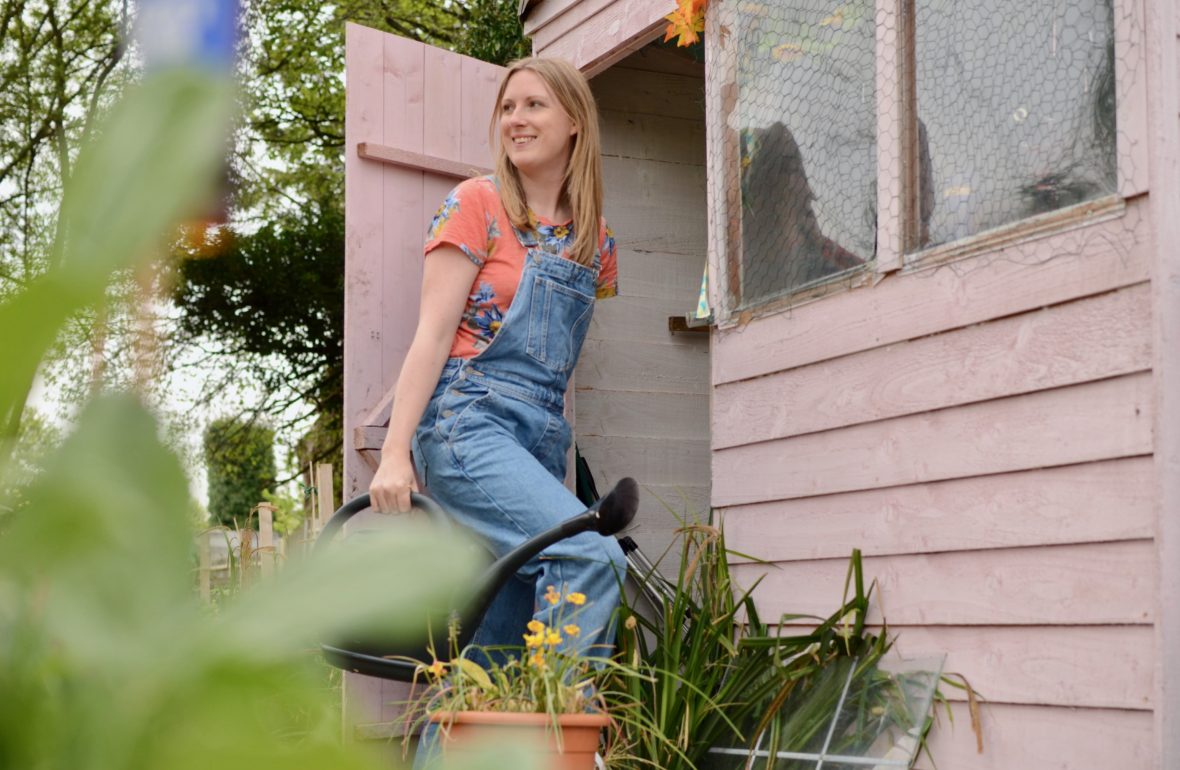
May is always one of the busiest months for the allotment plot. The weather is warming up which means things can be planted outside and the plot starts to fill up with lush new growth. There are lots of allotment jobs for May to be getting on with.
It can also feel a little overwhelming at times. The warmer weather means more and more weeds start to spring up, like unwanted party crashers. Leave your plot for a couple of days and you may just come back to a jungle.
Pests also become a problem at this time of year. With all those delicious new baby crops to munch on, the slugs and snails often act like the all you can eat buffet has reopened. Nothing hurts more than turning up to check on those newly planted out courgettes, only to find a ravenous slug has devoured the entire thing before you even got a chance to water it.
Hopefully, this blog post will put your mind at ease a little. I’ll list a few essential jobs for the month of May and give some advice of how to keep on top of the upkeep of your allotment plot, so you don’t get the May Blues.

ALLOTMENT JOBS FOR MAY
- Keep on top of weeding. Little and often is key to stopping a jungle from forming, so take out that hoe and go over those raised beds as often as you can!
Scoop your hoe right under the smaller weeds to destroy the roots and then remove the weeds from the bed and compost so they don’t take root again. If the weeds are big, it might be best to dig them out making sure you get the entire root in the process.
If weeds are a super big problem for you, consider implementing a no-dig method to your allotment plot. What’s that? Well it’s exactly what it says on the tin. Instead of digging over beds, which can result in spreading weed seeds about, you simply layer on your organic material. This blocks out or smothers weeds and stops them from growing in large numbers.
- Sow some Nasturtiums
In my eyes, this is an essential job, and here’s why:
Nasturtiums are one of the best companion flowers out there. They attract slugs and at the same time, bring in plenty of pollinators to your plot. Not only that, they are edible! They are also beautiful and add a much appreciated splash of vibrant colour to any allotment plot. So what are you waiting for, whack in some seeds!
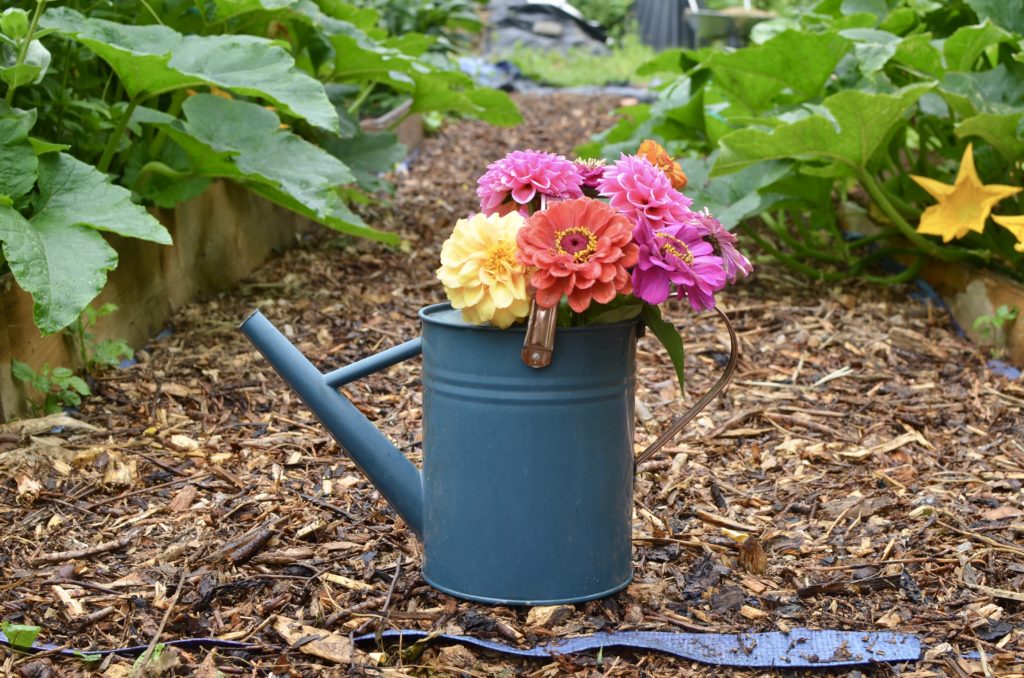
- Sow salad seeds such as lettuce, cucumbers and spring onions.
It’s the perfect time to start some salad crops. Salad crops such as lettuces are great for filling in borders with crops that you and pick regularly. They also grow pretty quickly and so you won’t have to wait long for a harvest.
With the weather warming up fast, you could even get away with direct sowing salad crops now. Maybe not cucumbers or tomatoes, but definitely lettuces, radish, spring onions and rocket.
- Decapitate Tulips
Sounds harsh, but if your tulips are looking a little bit sad and well, finished, it may be time to chop off their heads. This will force the energy of the plant into the bulb and not into making seeds. Leave the green foliage to break down on its own to add extra nutrients.
I’m moving my tulips this year because they got tulip fire, which is a bacterial disease that can spread to tulip bulbs like wildfire. Do look out for any signs of disease because otherwise it can devastate your crop.
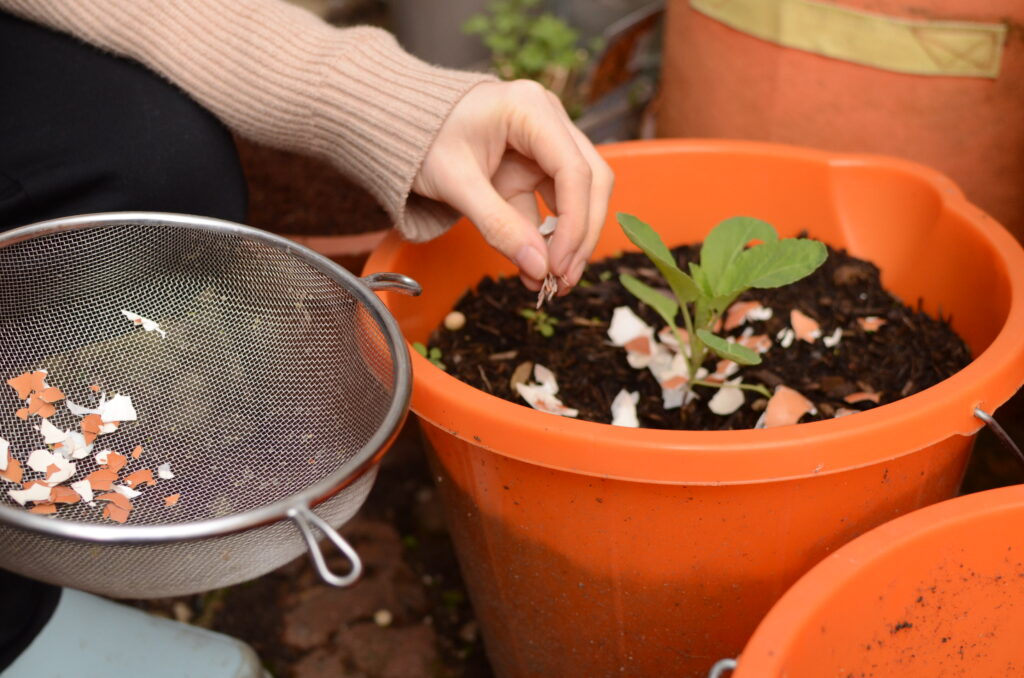
- Protect seedlings and young plants from slugs
Slugs and snails are out in their thousands at this time of year, so start protecting your crops if you haven’t already!
I like to use natural slug prevention where possible as it’s better for the health of your plot. Egg shells, strulch, coffee granules and copper tape all work well. A combination of a few of them together tends to work better.
If you’re really desperate, I would recommend a few beer traps. A beer trap can be made by pushing a container into the ground and filling with beer. The slugs are attracted to the yeast in the beer and fall in, drowning. It’s not very nice, but if you’re sick of your crops being eaten to death, it might be a good choice for you for a little while.
- Clear pond weed
If you have a wildlife pond, this is the time of year where pond weed started to thrive. Pond weed occurs in ponds when there is too much nitrogen.
There are a few ways of preventing too much pond weed. Adding oxygenating plants, keeping your pond in full sun and not placing it under a tree (fallen leaves contain nitrogen) can all help.
However, if you’ve got it, the best thing to do is to remove it. Scoop it out and place it on the sides to allow creatures to crawl back out again.

- Sow pumpkins and squashes
Sow pumpkins now if you want to grow a beautiful pumpkin archway this year. You know you want to! So much fun, so beautiful and relatively easy as the plants tend to take care fo themselves.
Sow a couple of seeds per pot and then pot on the strongest seedling once they get growing. Transfer outside in June when the risk of frost has completely gone.
- Water new rows of seeds
If you have direct sown anything, make sure to keep up with watering! The soil can dry out quickly when the sun comes out and it can be deceivingly hot for those new little seedlings without a regular drink.
Watering is an art, did you know that? Water once to wet the soil and then again to reach the roots. Don’t water the leaves, try to water around the stem directly so that non of the water is wasted. And of course, rainwater is always better than tap water! Collect it if you can!
I hope these give you a few allotment jobs for May to be getting on with this month.
Most importantly, embrace this month. I know it can often feel a little overwhelming and stressful trying to get everything growing, but it’s also exciting. Don’t let the stress of worrying whether or not anything will grow stop you from giving it a go. As I always say, just whack it in. If it grows, great. If not, whack something else in. Something will always grow, you just have to keep whacking stuff in until it does.
Happy Gardening!



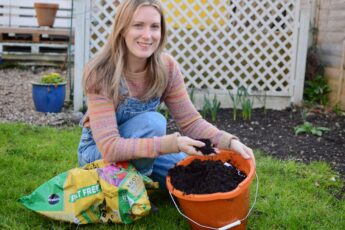

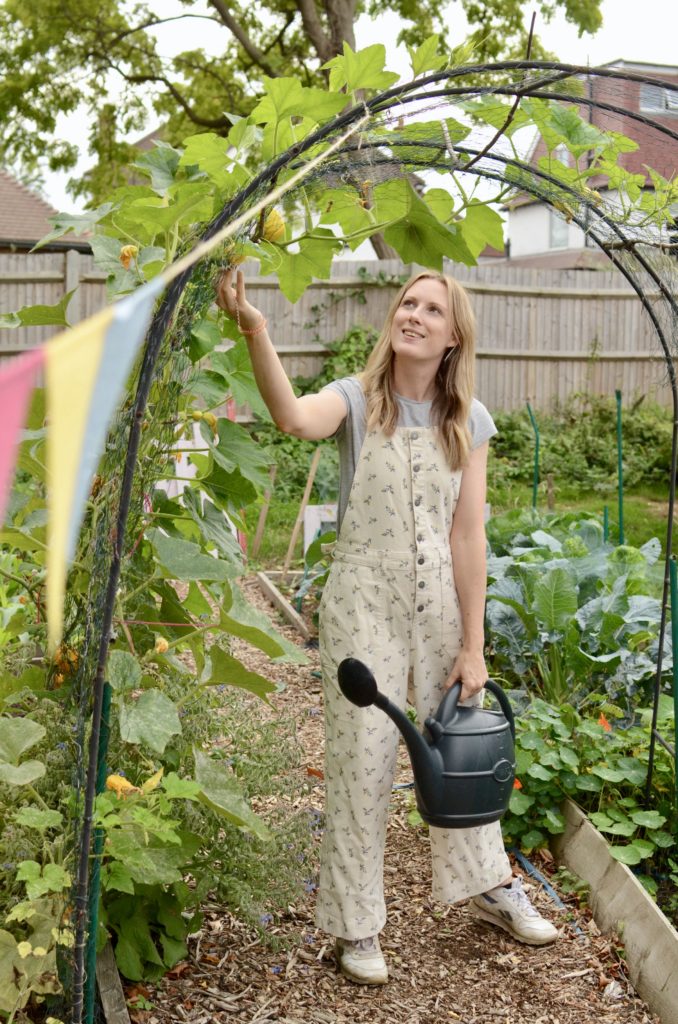

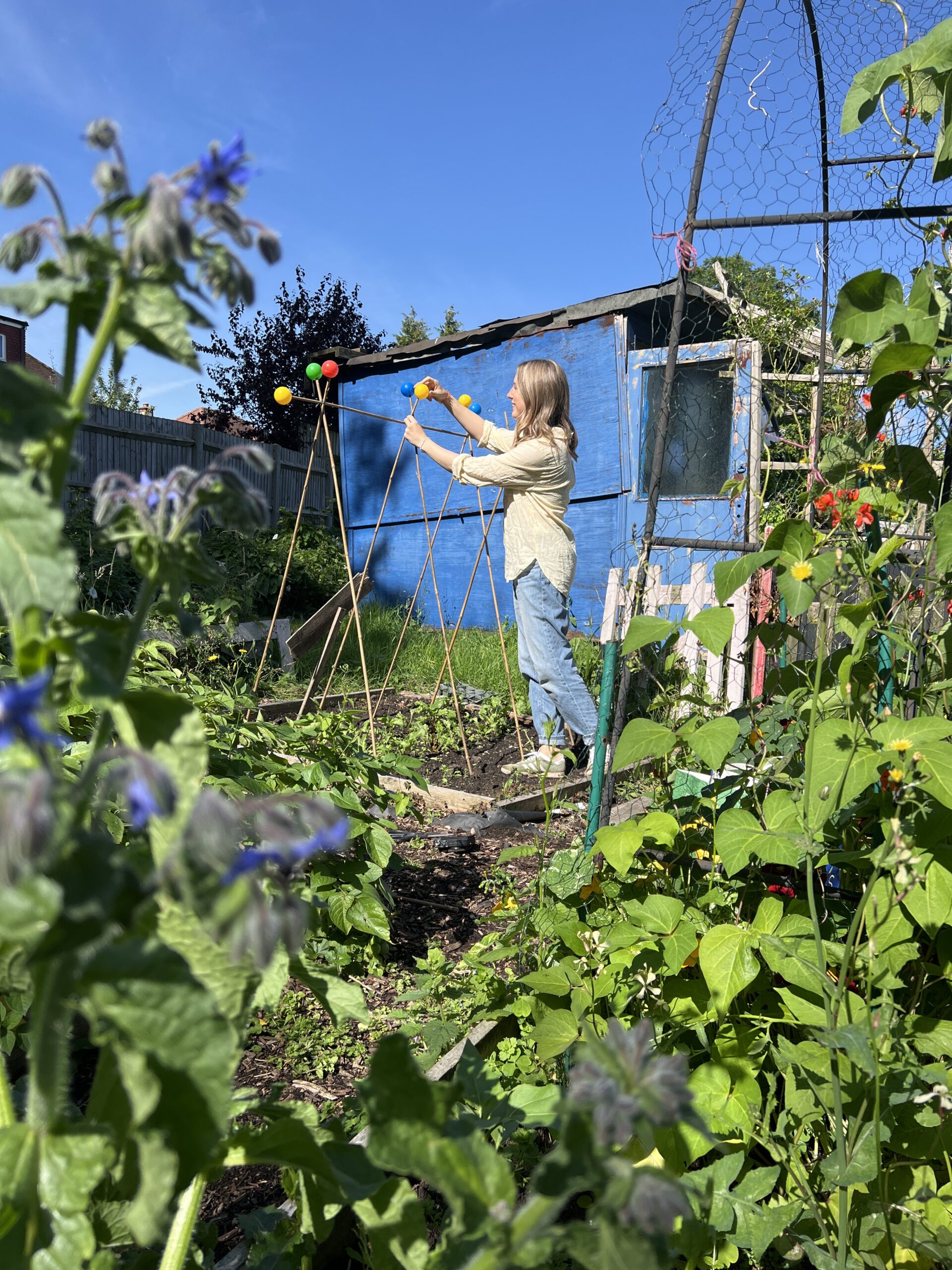
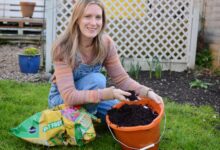






Looking good Emma!
Tina and I recently took on a plot which has been left at the mercy of bindweed, marestail and creeping buttercup for some years. As you can imagine, it is in a pretty bad state.
We are probably 3 years behind you, so it’s nice to see how you are progressing.
I see the wire over the window – I hadn’t thought about that but will be doing that at the weekend.
Very nice blog, thanks for sharing.
Happy growing!